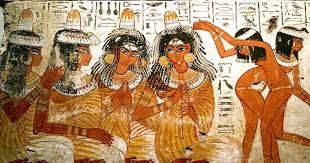Festival of Bastet, Welcome to the mystical world of Ancient Egypt, where every festival is a celebration of culture, spirituality, and divine connections. In this journey through time, we delve into the enchanting Festival of Bastet, a celebration dedicated to the feline goddess and protector of home and hearth. Join us as we uncover the secrets, traditions, and vibrant festivities that once echoed through the ancient temples of Egypt.
In the pantheon of ancient Egyptian deities, none captures the essence of grace, protection, and feline mystique quite like Bastet. A revered goddess, Bastet is often depicted as a lioness or with the head of a lioness and later as a domestic cat, embodying both ferocity and nurturing qualities.
The Festival of Bastet was celebrated annually during the flood season, which was around mid-July to mid-August. It was a time when the Nile River would overflow its banks, bringing new life and fertility to the land. This festival was dedicated to Bastet, who was believed to be the protector of women, children, and domestic animals.
The festival began with a procession from the Temple of Bastet in Bubastis (modern-day Tell Basta) to the nearby town of Tmu. The procession was led by priests carrying statues of Bastet and accompanied by musicians playing flutes and drums. The streets were decorated with colorful banners and flowers, and people joined the procession, dancing and singing hymns to Bastet.
Upon reaching Tmu, the procession stopped at a large open space where a grand feast was prepared. The feast consisted of various offerings to Bastet, including meat, bread, beer, fruits, and vegetables. The offerings were presented on tables decorated with flowers and incense burned to purify the air.
The feast was not just a religious ritual but also a social event where people gathered to enjoy food, drink, and each other’s company. Families would bring their children to witness the festivities and learn about their culture’s traditions. It was also an opportunity for merchants to sell their wares, such as jewelry, pottery, and textiles.
After the feast, there would be games and competitions for both adults and children. These games included running races, wrestling matches, board games, and dancing contests. The winners would receive prizes such as food items or small trinkets.
The Festival of Bastet had significant cultural and historical importance in ancient Egypt. It was a time when people came together to celebrate their faith in Bastet and honor her role as a protector of their homes and families. It also served as a reminder of the importance of fertility and new life during the flood season.
As we immerse ourselves in the Festival of Bastet, we discover a tapestry woven with spirituality, tradition, and the vibrant colors of Ancient Egypt. Whether you’re a history enthusiast or a traveler seeking a unique cultural experience, the celebration of Bastet offers a captivating glimpse into the rich heritage of this mesmerizing land. Join Top Ten Egypt Tours on a journey through time, where feasting with the deities becomes an unforgettable adventure.
Experience the wonders of Egypt with our exclusive tours Click Here!



Comment (0)